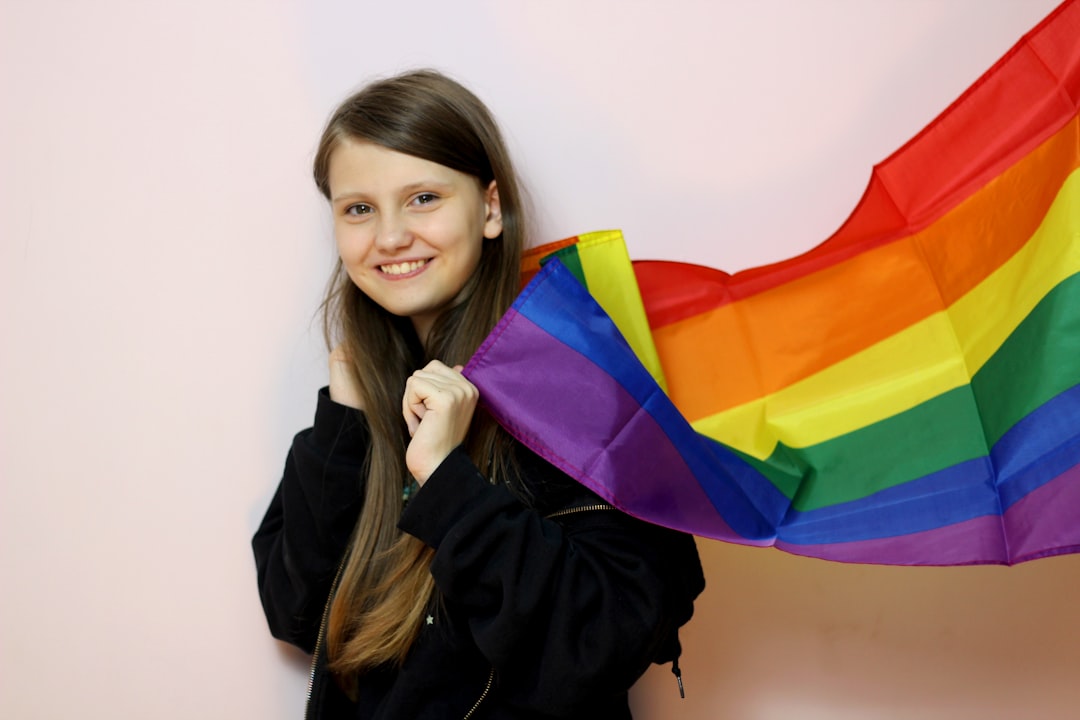Unpacking the Psychology of the Rainbow Flag
Unpacking the Psychology of the Rainbow Flag - Early Design and Intended Psychological Resonance
Moving beyond a mere historical account, this segment will specifically investigate the intentional psychological aims embedded within the rainbow flag's early design. We aim to critically assess how these original design choices sought to cultivate identity and emotional connection, and whether their initial psychological potency translates effectively to the diverse, rapidly evolving landscape of today.
The foundational eight-color iteration of the Rainbow Flag, conceived in 1978, presented an ambitious scope, including hot pink to embody sexuality and turquoise to signify elements of magic or artistic expression. This early, extensive palette reflected Gilbert Baker's stated comprehensive vision for an all-encompassing representation. Curiously, its subsequent streamlining was less about conceptual evolution and more a consequence of operational constraints, such as the widely documented challenge of sourcing hot pink fabric for scalable production, illustrating a direct influence of manufacturing feasibility on symbolic form.
Each of these initial eight colors was systematically imbued with specific psychological referents by Baker. Red was linked to life, orange to healing, yellow to sunlight, green to natural elements, blue to harmony, and violet to spirituality. This meticulous assignment of meaning underscores a clear design intent: to evoke a broad spectrum of positive emotional and spiritual associations. From a semiotic perspective, it's an intriguing attempt to pre-program emotional responses, though whether such precise psychological linkages universally translate from designer intent to observer perception remains an ongoing area of study.
The very choice of the rainbow itself, as a natural dispersion of light, was a profoundly astute move, engineered to psychologically convey the vast array of diversity and inherent inclusiveness within the LGBTQ+ community. This core design decision aimed to visually communicate an understanding that all unique identities and experiences are integral and contribute synergistically to a vibrant, cohesive whole.
The purposeful arrangement of colors, following the intrinsic order of a light spectrum from red through violet, represents a deliberate design choice intended to elicit a sense of natural progression and visual coherence. This sequential structuring was psychologically purposed to foster feelings of unity and continuity, leveraging a universal understanding of natural phenomena to anchor the flag's message of solidarity.
From an information theory standpoint, the early flag's design emphasized simplicity and clear color separation, critical for optimizing its immediate visual recognition and memorability—a fundamental principle in effective vexillology. This straightforward structure was engineered to resonate psychologically as an unambiguous and instantly recognizable symbol of identity and collective solidarity, perhaps sacrificing some of the initial granular symbolism for optimal communication efficiency.
Unpacking the Psychology of the Rainbow Flag - Color Associations and Their Emotional Weight
Building on the foundational insights into the rainbow flag's early design, our focus now shifts to the intrinsic power of color itself, recognizing that its emotional resonance is anything but static. While initial meanings were deliberately assigned, the actual psychological weight of each hue, from vibrant spectrum to tranquil shade, continuously interacts with broader cultural shifts and the lived experiences of diverse communities. This current understanding challenges any fixed interpretation, compelling us to explore how these emotional associations evolve, perhaps even diverging from their initial programming. The nuanced interplay between deeply felt emotions and a fluid social landscape presents an ongoing critical challenge for the flag's symbolic potency.
Empirical observations indicate that chromatic stimuli are not merely visual but engage direct physiological pathways. For instance, exposure to wavelengths associated with red light has been demonstrably linked to an accelerated heart rate and heightened states of arousal. Conversely, wavelengths corresponding to blue light have been observed to induce calming effects and significantly influence the regulation of an individual's circadian rhythms, suggesting a fundamental impact on biological timing mechanisms that warrant further investigation into their precise neurochemical interactions.
The affective resonance of a specific hue is rarely an intrinsic property; rather, it undergoes significant modulation through contextual cues. Consider a shade of yellow: within a framework of festivity, it might be algorithmically interpreted as conveying joy, yet when placed in a hazardous setting, its identical chromatic signature can communicate a clear warning. This underscores the dynamic, adaptive nature of human color perception, where surrounding information frames the emotional and cognitive interpretation, implying a complex interplay of sensory input and learned associations.
Beyond their direct emotional impact, specific color exposures have been observed to exert measurable influences on higher-order cognitive functions. Studies suggest that environments saturated with red stimuli might enhance selective attention and, in some cases, optimize performance on tasks demanding precision and meticulous accuracy. Conversely, exposure to blue stimuli appears correlated with improved divergent thinking and novel problem-solving approaches, implying distinct cognitive processing modes activated by different spectral ranges, though the causal mechanisms remain an active area of neuroscientific inquiry.
While a subset of fundamental color associations might exhibit a degree of cross-cultural consistency, a substantial proportion of their emotional and symbolic weight is profoundly culture-dependent. This means that a seemingly universal color can possess entirely disparate meanings across different societies, challenging the notion of a global, inherent color lexicon. For instance, while white often signifies purity and new beginnings within certain Western cultural frameworks, it frequently carries connotations of mourning and death in numerous Asian contexts, highlighting the variability in human symbolic systems and the need for nuanced, context-aware analysis rather than universal assumptions.
Furthermore, the magnitude of the emotional response elicited by a color appears to correlate more strongly with its intrinsic properties of saturation and brightness than solely its hue. A highly saturated and luminous color tends to evoke a more pronounced affective amplitude, irrespective of whether the underlying emotional valence is positive or negative, compared to its desaturated or darker equivalents. This suggests that the vibrancy and visual prominence of a color play a critical role in its capacity to trigger intense emotional processing, a factor often overlooked when solely considering a color's primary spectral classification.
Unpacking the Psychology of the Rainbow Flag - The Flag as a Collective Identity Anchor
Having explored the deliberate psychological principles underpinning the rainbow flag's design and the general impacts of color, we now pivot to its more abstract yet profound role: its function as a collective identity anchor. This goes beyond the specific meanings of individual hues or a designer's initial vision, examining how this evolving symbol actively contributes to the psychological cohesion of the LGBTQ+ community. As identities diversify and societal norms shift, understanding how the flag maintains or adapts its anchoring power—and where it might face challenges—becomes central to appreciating its ongoing significance in fostering solidarity and shared purpose.
Observational neuroimaging data suggest that the visual processing of a group's flag can indeed stimulate specific brain regions, notably those within the medial prefrontal cortex. This activation appears to be intricately linked to the cognitive processes underlying self-concept formation and the demarcation of in-group versus out-group social categories. Such a physiological grounding implies a fundamental mechanism by which flags contribute to feelings of collective affiliation and distinct group identity.
Empirical investigations have consistently observed a correlation between an individual's visual exposure to a collective flag and a measurable increase in prosocial conduct, particularly altruistic acts directed toward recognized in-group members. This phenomenon is hypothesized to operate through the reinforced saliency of shared social representations, leading to an elevated perception of group solidarity and mutual obligation. It raises questions about the generalizability of such effects beyond controlled experimental settings.
The psychological response to the perceived defacement or destruction of a collective flag frequently manifests as profound emotional distress and, in some instances, a sensed threat to the very existence or integrity of the associated group. This intense reaction suggests that flags serve as more than mere fabric; they are functionally externalized constructs that embody a group's shared historical narrative, values, and sense of intrinsic worth. Their vulnerability then becomes directly mapped onto the collective's own perceived fragility.
The sustained psychological resonance of a flag as an anchor for collective identity appears to be significantly amplified through its active integration into a group's communal historical narratives and its incorporation into established collective rituals. This process moves beyond a simple recognition of visual signifiers, effectively weaving the flag into the very psychosocial infrastructure of the group, thereby imbuing it with layers of meaning that can be difficult to easily unpick or redefine.
The widespread, almost ubiquitous, presence of flags across a remarkable diversity of human societies globally points towards a potential underlying evolved cognitive propensity. This mechanism might enable the visual abstraction and subsequent reinforcement of group boundaries and shared social identities, leveraging a basic human capacity for symbolic representation. From an organizational perspective, this suggests flags play a foundational, rather than merely decorative, role in structuring complex human social systems, even if their specific symbolic content varies wildly.
Unpacking the Psychology of the Rainbow Flag - Navigating Evolving Symbolism and Social Cognition
The earlier discussions delved into the foundational psychological aims embedded within the rainbow flag's initial design, examining how specific colors were intended to resonate and how the flag anchored a burgeoning collective identity. However, in the dynamic social landscape of mid-2025, a critical re-evaluation of symbolic meaning is paramount. "Navigating Evolving Symbolism and Social Cognition" shifts the focus from original intent to the active, often contentious, process through which a symbol’s psychological weight is continually remade. This section explores how societal transformations, the proliferation of digital platforms, and increasingly nuanced understandings of identity continuously sculpt perceptions of the rainbow flag. It considers the cognitive and emotional adjustments required when a broadly inclusive symbol encounters the specificities of diverse subgroups and emerging social movements. Ultimately, this necessitates a move beyond static interpretations, probing the complex psychological mechanisms by which a shared symbol either adapts to or struggles against new readings and fragmented realities, impacting its efficacy as a unifier.
The neural pathways associated with symbolic interpretation are observed to undergo continuous modification, suggesting that a symbol's affective and cognitive weight is dynamically refined by ongoing collective engagement rather than being static from its genesis. Studies of cultural dissemination models suggest that symbols, akin to the rainbow flag, function as evolving conceptual entities whose assigned meanings are iteratively reconfigured through shared societal discourse, often diverging from their originally programmed significance. Longitudinal investigations into visual processing indicate that modifications to a symbol's form, or the emergence of intricate sub-symbolic elements, can alter its cognitive load during recognition and emotional mapping, potentially demanding greater mental effort for rapid comprehension. Sociocognitive analyses reveal that pervasive collective symbols frequently acquire multiple, occasionally divergent, interpretations across various constituent subgroups, a phenomenon underscoring the dynamic and often fragmented nature of collective identity. Computational and network-based studies illustrate that digital social environments significantly amplify the velocity of symbolic transformation, facilitating unprecedented rates of recontextualization and the formation of novel semantic linkages for widely recognized collective emblems.
More Posts from psychprofile.io:
- →The Neuroscience Behind Extraversion How Brain Structure Influences Social Behavior
- →Deciphering Innovator Minds Insights From Experimental Psychology
- →The Neurological Intersection False Awakening and Sleep Paralysis Explained
- →7 Critical Clinical Skills Every Aspiring Neuropsychologist Must Master Before 2025
- →Unraveling the Psychology Behind Attributions vs Injunctions Why We Explain vs How We're Told to Act
- →The Role of Dream Symbolism in Accessing Unconscious Trauma New Research Findings 2024

